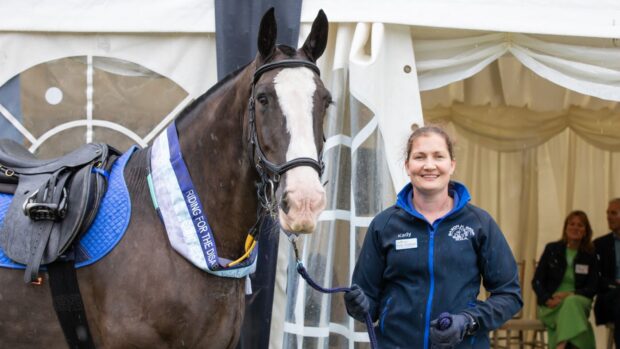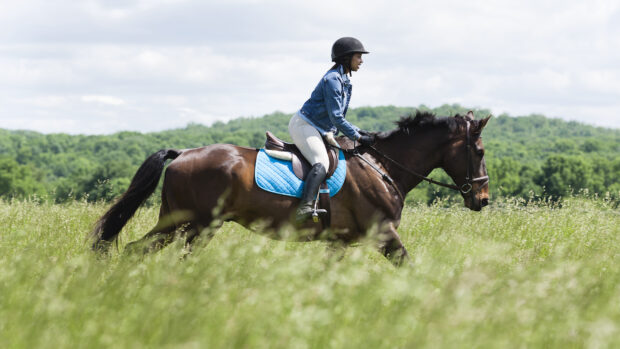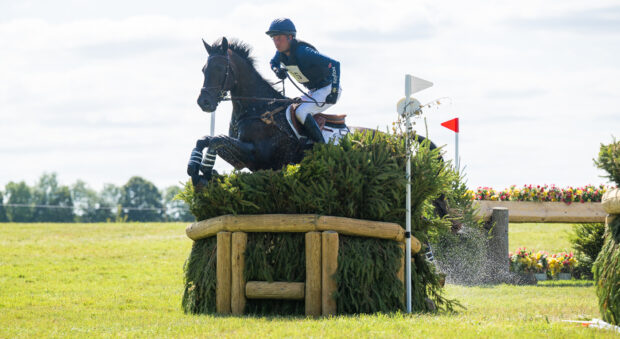It’s been a while since I last wrote, having had a bit of a mid-season break of sorts, and it’s really nice to be back again!
I got back to work last Wednesday having finished my challenge to walk the 268 mile Pennine Way in 14 days for the charity Endometriosis UK.
As with anyone who’s forged a career in horses, I’ve had my fair share of injuries and I know what hard work is all about. I have, however, never experienced anything quite like what my body went through over those two weeks! It was without question the hardest thing, both mentally and physically, I have ever done. It wasn’t even a matter of fitness or being under-prepared; I was conditioned enough to get up the hills and cover varying distances of between 13 and 26 miles per day, but quickly learned that nothing prepares you for what your body goes through unless you’ve actually done something like this before.
Suffice to say I hadn’t ever done anything like it and so had no idea what I was getting myself into!
My standard optimistic outlook led me to trust that I could carry a 21kg pack along the toughest long distance trail in the UK. Let me tell you, I couldn’t. I established this in the first mile, after which I disposed of 3kg of weight straight away at the campsite I stayed at that night (what on earth I thought I would need flip flops anyway for goodness knows!).
And so it was that for the initial 10 day stretch of the challenge that I carried 18kg (almost 1/3 of my bodyweight) up to nine hours a day over moorland, along drove roads, across hideous bog, up crag faces then down the other side again, not to mention along a fair few bridleways!
The result of this, plus some really wet conditions, was a crucifying effect on my feet and  previously untapped parts of my legs — all of which really impeded my ability to walk at all. These unwelcome side-effects often kicked in around the 15 mile point; not too helpful on the 20 mile days!
previously untapped parts of my legs — all of which really impeded my ability to walk at all. These unwelcome side-effects often kicked in around the 15 mile point; not too helpful on the 20 mile days!
The flip-side of doing something like this is that you get to see some amazing places that you often would never, ever know were there otherwise. The trail took in some truly astounding views and amazing landmarks along the way, and demanded climbs that had you proposed to me on paper, I would have never thought I’d make under that weight.
It taught me that even when you think you have nothing left, regardless of how much pain you’re in (provided you’re not massively injured of course), if you can just keep going, you can actually get through it. This revelation does however mean that I no longer have any excuse for wanting to stop because I’m knackered during lessons on my horse unfortunately!
The whole thing was embraced by so many people; my family, friends (some of whom came and joined in over the last few days), colleagues and even people I’d never met before but got talking to along the way and I’m so grateful to every one of them for their support.
Ultimately, it was an amazing experience, we raised a pretty decent chunk of money, and it was something I will never forget. At the celebrations afterwards, my mum said: “So what’s next then?” I think something with wheels on it would be a good start!
On your marks
Once again we’re looking forward to welcoming a new intake of students for the coming academic year, the first batch of whom arrive this week. We will also meet a whole new crop of horses over the coming weeks who come with their owners in tow to use our facilities at here at the therapy centre.
We aim to get as many student and staff horses through our doors as possible each year, most of whom will hopefully only visit for exercise purposes rather than for rehabilitation. This need stems from our involvement in a huge number of research projects, practical demonstrations and teaching commitments over the coming months, all of which we need “demo horses” for to effectively show what would happen in a real case situation, but without compromising the confidentiality or work programmes of any of our patients.
The habituation of all of our demo horses to treadmill and/or water treadmill exercise is a process which will mostly happen up until Christmas, with a steady trickle of additional horses being trained throughout the spring and summer terms also. We have tried and tested procedures in place for this, but there is of course an element of deploying different ways of achieving the same thing depending on the horse’s reaction to a situation.
Most people who come to have a tour around our centre take one look at the treadmill and say: “Oh, my horse would NEVER go on that!” The truth is that, 99% of horses will take to the high-speed treadmill really well, with around the same proportionate percentage going well on the water treadmill also. For both of these machines, habituation – which can be defined as the stabilisation of a horse’s gait on the treadmill, whereby it reverts to its normal overland rhythm and stride pattern — takes three to four sessions on average.

Habituating
We always use two handlers plus a driver (who actually operates the treadmill) when we start a new horse, as this helps to keep them straight and in the right place on the belt until they get their balance sorted.
Initially getting them on there is very much the same as teaching a horse to load into a trailer, and as long as their happy to follow a handler up the belt then you’re pretty much there. With the normal treadmill, we teach them to step forwards and backwards prior to starting the belt, thus giving them an indication that something is about to happen. When they cotton on to this, which normal only takes a minute or so, we then push start as they’re about to step forward — that way they begin walking without even realising it. You do get some horses who, despite this tactic, will watch their own feet disappear underneath them but the moving belt soon dictates they soon have to take a step!
The water treadmill is slightly different in that every horse that we start in there will have a tiny bit of IV sedation from the vet, just to offset against the potential intimidation factor of the chamber. They will also have already been habituated to normal treadmill exercise so they understand that they need to move with the belt. Once started, we take our time in terms of getting the water up to the desired height so as not to scare the horse, often doing this over a few sessions, although you do get the odd one who is so keen that we need the water to slow them down! We have a handler go into the chamber with the horse each time until they are confident enough to walk in themselves, giving them a bit more reassurance that it’s all ok.
Treadmills can look pretty scary, but official figures on safety are actually very impressive, and incidents are very rare in our experience. We keep the horses safe by using stringent, tested methods for treadmill exercise, and this would be my advice to anyone thinking of this type exercise for their horse: wherever you take your horse, you need people who know what they’re about. The whole affair should be slick and unflustered, we’re not looking for fireworks.
We want everything to be as calm and relaxed as possible, while being as safe as we can make it. Get that right and you have a horse that will think a treadmill is a pretty great place to be.
Fizz





